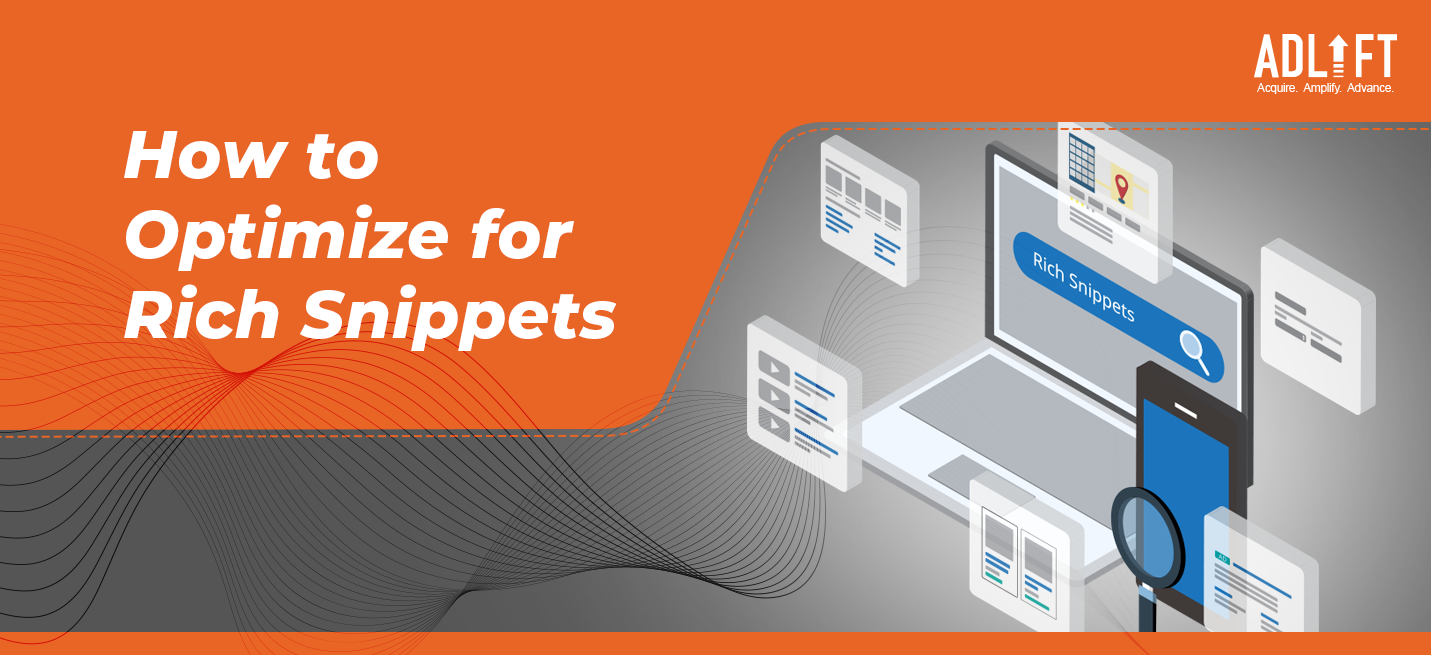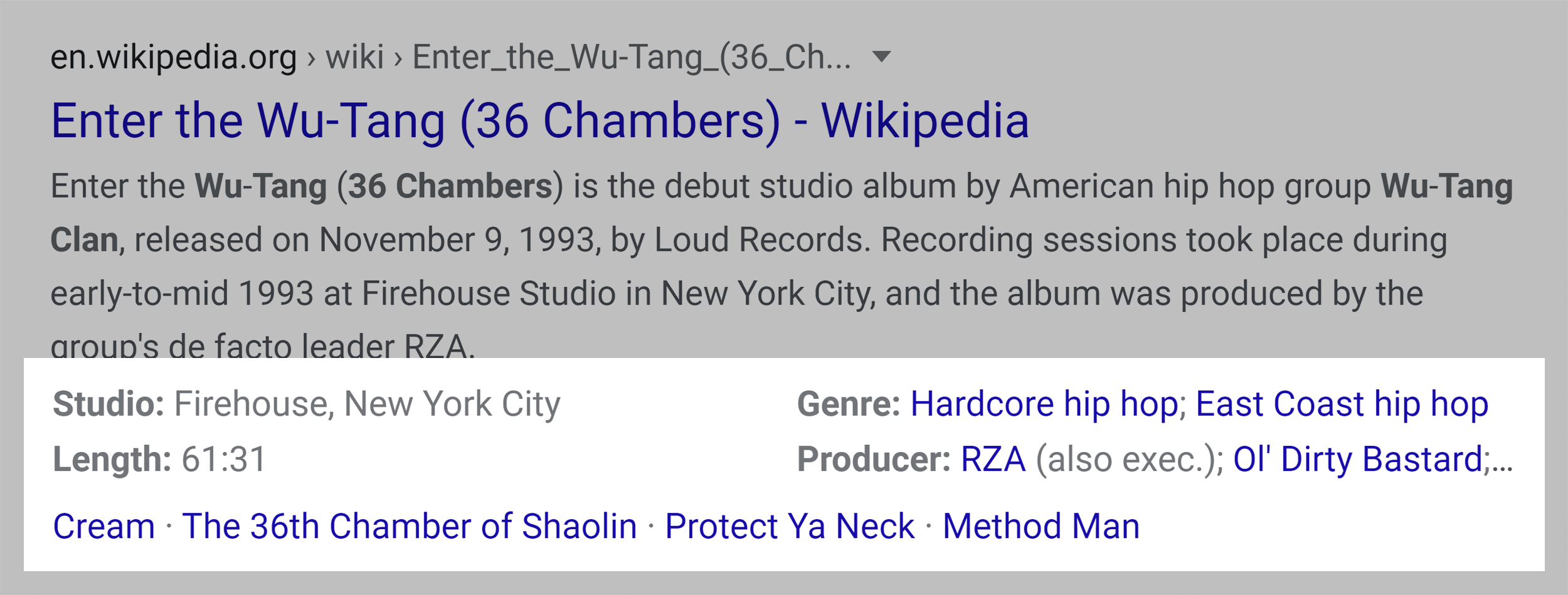Optimizing Google Rich Snippets for Stronger SEO

Interesting name, isn’t it? Rich snippets. Inviting, like someone sharing some juicy piece of information. You might have encountered the term thrown around in the context of SEO — and we bet you’ve seen it when you do a Google search as well. So, what exactly are rich snippets? How do Google’s rich snippets work? What is a rich snippet tool? We have the answers to all your pressing questions right here — keep reading.
What are Rich Snippets?
Rich snippets, rather like the name itself suggests, simply involve a little extra addition to your regular garden variety search engine results. Rich snippets are also sometimes called rich results — which can help you see what they do! Google rich snippets draw on data on website pages through their structured data, which are special pieces of information coded into a page’s HTML coding, which can then be used by search engines to add a little sugar and spice to whatever it is you’re looking for.
Let’s say you’re looking to make weekend plans and turn to Google: for an easy weekend brunch recipe or concert tickets, for example. You’ll find that some results come with extra information, from recipe details and cook times to ticket prices and even date, time, and location information. These are rich snippets in action!
What are Rich Snippets, Rich Results and SERPs – Understanding the Difference
Before we get into how rich snippets can benefit your online presence — a lot, at that! — let’s take a quick dive into some keywords you might have encountered.
Rich snippets — also called rich results, sometimes — are, as we’ve established already, results with extra interactive or visual elements to give you a sense of what you’ll find when you click through. Rich snippets are based on the structured data you provide in your page’s HTML.
Featured snippets, on the other hand, show up in a nifty little highlighted box at the top of your search engine. Featured snippets are like neon signs on top of a list of results saying hey, pick me! Featured snippets, unlike Google rich snippets, draw from your on-page and technical SEO — which the search engine does for you.
Featured snippets are dependent on their ranking: search engines will give you that coveted neon sign only if you already rank in the top ten results for that specific query. Rich snippets, on the other hand, are specific to the content type on your page, such as a recipe, reviews, or even product prices. And finally: SERPs. This one is pretty simple: SERP stands for search engine results pages and simply refers to the search engine you or your users are using to perform searches. The results page is essentially the battleground of SEO: this is where you’re fighting it out with other pages for ranking — and where all your rich snippets will appear.
What are the Different Types of Rich Snippets?
Given that different web pages will offer different things, it stands to perfect reason that rich snippet types will vary too. Google rich snippets, consequently, come in a variety of flavors and functions, including the movie snippet, event snippet, product snippet, review snippet, music snippet, and recipe snippet.
Movie Snippet
The movie snippet shows you summarized information about a movie, from its runtime and release date to genre and even where it might be streamed or bought.
Event Snippet
Event snippets give you the most important information about events such as concerts, including when and where it’s happening and whether tickets are for sale and where you can buy them.
Product Snippet
This kind of rich snippet is invaluable to eCommerce businesses — it shows you how much a product costs, whether it’s on sale, where it can be bought, and even how other buyers rated it.
Review Snippet
This rich snippet shows you how much other users liked something through a star rating!
Music Snippet
Music snippets show you information about any song or album you searched for — who composed it, who wrote the lyrics, when it came out, etc.
Recipe Snippet
This kind of rich snippet tool can offer lots of pertinent information related to your searches, such as nutritional information, cooking time, and the ingredients you’ll need.
How do Rich Snippets help SEO?
The additional information that rich snippets bring to your appearance on SERPs can make a big difference when it comes to your website’s reach. Most search engine results show you the same set of information across the board which they derive from the page in question’s title tag, URL, and meta description. Rich snippets, on the other hand, as you have likely already experienced firsthand, offer more information organized in a way that’s quite easy on the eyes.
This added visibility, thanks to rich snippets, can help you garner that coveted organic click through rate. Although Google has previously made it clear that structured data in and of itself isn’t a ranking factor, consistent click through and playing well with search engine rules can only bring you good returns in the long run.
Here are some of the incredible advantages of using rich snippets in your SEO strategy:
You get the user’s nearly undivided attention.
Because Google rich snippets are designed to stand out and offer the most relevant information in relation to a search in a snappy form, you have your target users paying attention to what’s on your table.
The most important information comes first.
Whether you’re offering recipes or a great new product with rich snippets, all the most important information is already front and center before your target users.
Conclusion
Google rich snippets are an incredibly valuable tool in an economy that increasingly runs on attention. Rich snippet tools are an excellent way to boost your CTR and visibility in the long run. Your best friend on this road — the ultimate rich snippet tool, structured data.
While the technical-sounding term might make you want to scream and run for the hills, partnering with an industry-expert digital marketing firm like AdLift can help you take your rich snippets to the next level and reap all those delicious SEO fruits.
FAQs
What is the meaning of rich snippets?
Rich snippets are essentially all the extra information you see when you search for something on a search engine. You can watch this video for additional information.
What are examples of rich snippets?
Rich snippet examples include review snippets, recipe snippets, event snippets, and product snippets.
Do rich snippets help SEO?
While Google has previously stated rich snippets aren’t a ranking factor, rich snippets do boost your click through rates through the extra information they provide on SERPs.
How do you use rich snippets in SEO?
Once you know what details you want in your rich snippets, you’ll need a rich snippet tool like Google’s own Structured Data Markup Helper to add structured data to your page’s HTML.
What is the difference between rich snippets and schema?
Schema refers to a form of coding that allows you to embed extra information in Google searches; rich snippets are a kind of extra information that can be implemented through schema.
Categories
Recent Posts
- Boost Your Website’s Visibility with These Must-have B2B SEO Tools January 13, 2025
- Master Your Digital Strategy: Learn the 7 Types of SEO That Lead to High Rankings January 13, 2025
- 2024: A Year to Remember at AdLift! January 7, 2025
- How to integrate your SEO and paid search strategies to maximize efficiency and reduce CAC January 6, 2025
- SEO in 2025: Adapting to a Changing Search Landscape By Prashant Puri, CEO & Co-Founder, AdLift January 3, 2025
- Understanding the Google December 2024 Spam Update: What You Need to Know December 31, 2024
- Beware of Ongoing Scams Involving Fake AdLift Representatives December 31, 2024
- Facebook vs Twitter: Which Platform Wins for Your Marketing Goals? December 30, 2024
- The Art of Naming Conventions in Marketing Campaigns: Best Practices for Clarity and Success December 26, 2024
- Is Your Content Strategy Working for You — or Against You? December 19, 2024
Get
in Touch
Contact AdLift for a 360-degree marketing plan







